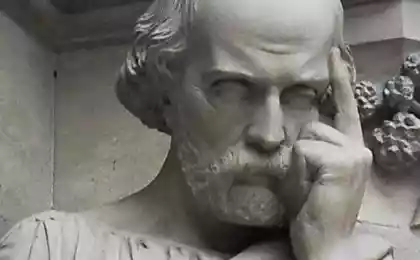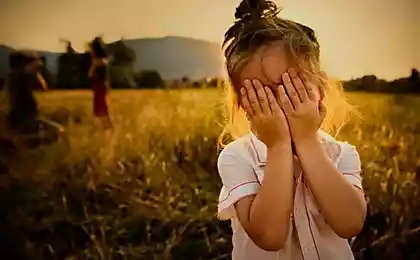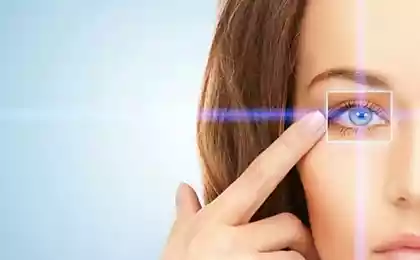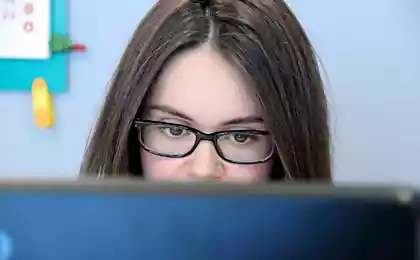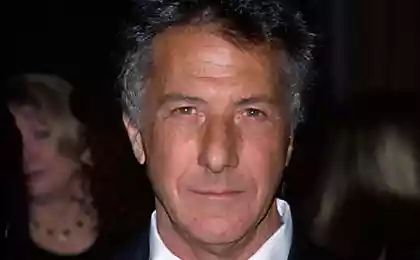695
When there is no "mental vision": what happens in the mind
The author of this article Dustin Grinnell thinks without pictures, but people like it, can help us understand how the brain processes through which we see.
Long-distance relationships are difficult to maintain even when all is well. But when we with the girl were forced to live on opposite ends of the country, there was an obstacle with which few faces, I could not imagine her face.
Same with landscapes, sunsets, parks and rivers when it came to visual representation in the mind, I was blind. I've never thought about not being able at will to call to mind the image of his girlfriend. I have never had that ability, and I didn't know that it is not. But I have not had any problems with tasks that seemingly required the presence of "mental vision", for example, to navigate the city or get to know friends.
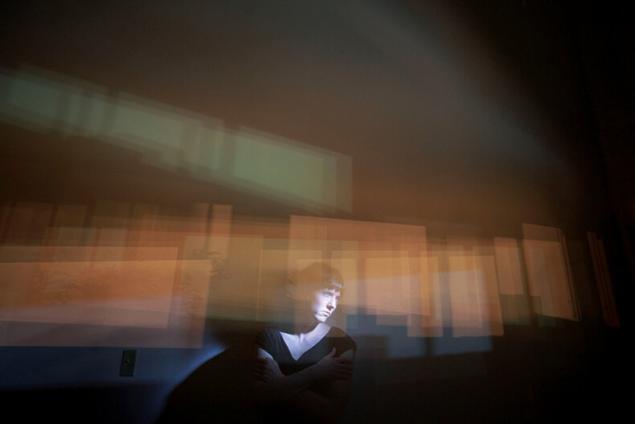
Thus, I was surprised when I saw on TV an interview with Craig Venter, the biologist who created the first artificial organism. He explained the success in the academic field with an unusual way to think using only concepts without any images in mind.
He repeats now: "It is as if the information is stored on your computer, but there is no screen connected to it". This is just how I feel. And on this occasion I have any questions. Why am I not like others? I get by in life without "mental vision"? Is it possible to develop "mental vision", and do I need it?
I started researching the issue and soon realized that science is just on the way to its solution. And, ironically, the study of people like me can help to learn more about how our brain processes what we see.
We knew about the existence of people without "mental vision" a hundred years ago. In 1880 Francis Galton (Francis Galton) conducted an experiment in which people imagined themselves sitting at the table having Breakfast, while they were determined luminance, detail and color of the table and objects on it. Some was easy to imagine a table, for example, Galton's cousin Charles Darwin, for which the scene was "so clear, like I was looking at pictures". But some people could think of nothing but emptiness.
Today there is a standard way to measure the severity of "mental vision": a test of the clarity of the visual imagination. In this test, people are asked to imagine different scenes and to assess sharpness in the mind. Studies show that most people can quite clearly imagine something in the mind; only 2 to 3 percent say the lack of the mental images.
TAKE THIS TEST:
How well You are able to create a picture in your mind?
Some people can't imagine the picture of things in mind — they have no "mental view". We knew about AVANTASIA for over 100 years but are only now beginning to understand what is happening in the mind of people with this feature thinking.
To test the "mental vision", and answer this questionnaire. It is based on the test, which scientists call "a Test of the clarity of the visual imagination." Read the question, then close your eyes and imagine the picture before you answer. At the end of the test you can compare your results with other people.
Think of a relative or friend with whom you often see, but which is not now. How clearly can you imagine the outlines of the head and shoulders?
1 point — no image, only know what you think about the object;
2 points — vague and dimly;
3 points — to the extent clearly and accurately;
4 points — clearly and precisely defined;
5 points — perfectly clear and as clearly as if a normal vision.
Imagine the gait of the same person, visualize the length and speed of steps. As you can see it clearly in your mind?
1 point — no image, only know what you think about the object;
2 points — vague and dimly;
3 points — to the extent clearly and accurately;
4 points — clearly and precisely defined;
5 points — perfectly clear and as clearly as if a normal vision.
Visualize the rising sun. Imagine the darkening sky and storm clouds. How well can you imagine this scene?
1 point — no image, only know what you think about the object;
2 points — vague and dimly;
3 points — to the extent clearly and accurately;
4 points — clearly and precisely defined;
5 points — perfectly clear and as clearly as if a normal vision.
Again, imagine a stormy sky, but it is already clearing up and the clouds a rainbow. How well do you see it?
1 point — no image, only know what you think about the object;
2 points — vague and dimly;
3 points — to the extent clearly and accurately;
4 points — clearly and precisely defined;
5 points — perfectly clear and as clearly as if a normal vision.
Think about what it looks like a store where you often visit. Imagine how it looks, if you look at it from the other side of the street. How well do you present it?
1 point — no image, only know what you think about the object;
2 points — vague and dimly;
3 points — to the extent clearly and accurately;
4 points — clearly and precisely defined;
5 points — perfectly clear and as clearly as if a normal vision.
Imagine the same store, but you have already approached the window. Clearly you can see the colors, shapes and details of objects that are sold?
1 point — no image, only know what you think about the object;
2 points — vague and dimly;
3 points — to the extent clearly and accurately;
4 points — clearly and precisely defined;
5 points — perfectly clear and as clearly as if a normal vision.
Think about the place outside the city with trees, mountains and lake. What is the intensity of your understanding of this landscape?
1 point — no image, only know what you think about the object;
2 points — vague and dimly;
3 points — to the extent clearly and accurately;
4 points — clearly and precisely defined;
5 points — perfectly clear and as clearly as if a normal vision.
Stay in the same place, imagine the color and shape of trees. How clearly they are displayed you have the imagination?
1 point — no image, only know what you think about the object;
2 points — vague and dimly;
3 points — to the extent clearly and accurately;
4 points — clearly and precisely defined;
5 points — perfectly clear and as clearly as if a normal vision.
Your result is What your scores say about you?
8 to 14: About 5% of people fall within this range. Scores indicate that your visual imagination is weaker than the norm. The more likely you AVANTASIA, the less you have points.
15 to 20: This indicates that your visual imagination is less clear than average. About 9% of people fall in the same category as you, along with those 5% who scored less than you.
From 21 to 27: About a quarter of test takers get this result. You belong to part of people with very high clarity of the imagination, but your score is not too low.
28 to 33: about 40% of people gaining the same number of points. This suggests that your "mental vision" is typical, neither extremely weak nor extremely strong.
34 to 40: Your result suggests that your visual imagination more clear than usual. Scores in this range may indicate "giphantie" is an exceptionally strong abilities of the visualization. About 23% of people have the same result.
For a long time nobody thought about what is the cause of this situation. "It was a "blind spot" for science," says neurologist Adam Zeman, from the Exeter University (The University of Exeter, UK). The situation changed in 2003 when Zeman called a colleague and said, "you Redirect the patient — it ceased to imagine". It was a 65-year-old man, surveyor, loss of mental vision " after heart surgery. Zeman decided to find out what is happening in the mind of the person.
Eyes Of Tony Blair
We have a good idea of how it works are usually creating an image in the mind. When You see the real object, the information captured by the eyes, is supplied to the brain, where it activates unique for this object combination neurons: chair — one single combination table — more.
The MRI brain scan shows that when You present the picture of an object, runs the same neural combination, only weaker than when You actually see it. "Performance in "mental vision" image — a system "top down, not bottom-up," says Zeman.
To learn how the brain works the aforementioned patient, Zeman put him in an MRI scanner and were shown images of people he could find, including the Prime Minister of great Britain Tony Blair.
Visual field closer to the back of the head and intensified in special combinations, as expected. However, when the patient asked to see the portrait of Blair's "mind's eye" in these areas, nothing happened. In other words, the areas responsible for visual information, worked only when the signal received from outside, activate them on their own, the patient could not.
But was soon made unexpected discoveries. Despite the fact that the patient could not recreate in my mind the image of Tony Blair, he was doing tasks that seemingly required the presence of the picture — for example, to specify the color of the eyes of the former Prime Minister, seeing his photo. He also passed other tests: imagine the situation in your house and count the Windows.
Shortly after Zeman published the results, he heard stories from 21 people on the state, which he called AVANTASIA. However, unlike the first patient, they claimed that they have it from birth. A number of cognitive tests confirmed the presence of this condition, as well as the fact that for anybody it will not cause problems in terms of behavior, all performed actions that seemed impossible without "a mental view".
It may sound paradoxical, but for me test "visual imagination" is easy to perform without the "mental view". For example, test with a score of Windows. At least in my experience, the image of my home in the mind is absent, but there is the realization that I was there. Venter says that he is exactly the same. He should not "see" the event to contact them in memory. "There are different ways of storing visual information, not just a picture".
To better understand what it is, I spoke with Steven Koszonom, scientist-neurocognitively at school Minerva in the OIG, San Francisco. He says that visual imagination is constructed in the brain in several ways.
There are separate sections for different properties — shape, color and spatial relationships, and more. It seems that the areas I do not work for all. I have no problems with some of the answers to the questions from the test Kosslyn, for example: "What shape is a closed area in a capital letter A?" After some thought, I could answer that it is a triangle, and Kosslyn asked me how I got it. I felt it as if imagined writing this letter.
Kosslyn thinks that the feeling of the process, when we portrayed, gives us the key to how people with AVANTASIA solve problems with graphic information. He argues that the fulfillment of these tasks additionally feeds the neurons involved in the control of physical movements, instead of using the areas responsible for visual.
Have Koslina once had a patient with violation affecting the visual areas of the brain and left her blind. But she had the ability to carry out tasks which at first glance associated with visual. When Kosslyn asked her to represent the letters of the alphabet and tell him that there is a curved line, it perfectly coped with this task. "But if you watch it — says Kosslyn — it is clear that she drew the letters by the fingers.
Zeman agrees that this could be similar to how cope with this task people with AVANTASIA. According to him, "there are many ways to represent a word that is not associated with visual. "You are able to submit the letter not only because I can see her, but also because they know how to write it."
Not only pictures in my mind are a way of processing visual information; and, may be, it's not even the best way. The Zeman has a certificate confirming it. "Surprisingly, we were contacted several artists with AVANTASIA". It can be assumed that artists just need "mental vision", but is not in all cases.
Remember also that the aforementioned researcher Craig Venter sees the connection between their AVANTASIA and scientific achievements. "A lot of people with a photographic memory for facts can't make detached theoretical generalization of how it turns out at me."
Probably the inability to "see" something with your mind forces us to look at the world differently in the end sometimes it turns out that the non-Orthodox view, which is so good in art or in other fields that require unconventional thinking.
The patient with acquired AVANTASIA shows and other unique skills of people with a lack of visual imagination. When Zeman was first testing it, he gave him a simple aptitude test, including creating images in the mind. The task was to determine which images depict the same figure, somehow inverted, and which are not (see figure below).
How clear is your "mental vision"?
This puzzle is used to test the ability to present an image in the mind. If you can quickly solve it, you may have a clear mental vision".
First look at this figure and make sure to remember it. Then scroll down to the end of the article — there you will see three similar object. Which of them is the reversed version of this figure, and which is not?

The greater the angle, the longer people have to strain their brain to figure whether figure. Theoretically, the subjects turn the picture in my head, and the longer they have to twist it, the more time it will take to complete the task. Patient AVANTASIA, it seems, didn't do it, because performed the tasks faster than the average person.
We still unknown how exactly people with AVANTASIA do what you do, but the idea that different brain areas can be used for processing visual information, is gaining greater confidence. Zeman acknowledges that we are all to some extent use different parts. Just those people who engaged in "mental vision", rely more on visual areas. But whether some of us better than others in the use of non-visual areas for processing visual information? And do I need to give these people a prefer when you perform certain tasks?
We don't have enough data to answer this question. But Zeman has already conducted a lot of experiments, exploring these areas, and results are expected soon.
Zeman faced with a large number of people who have "mental vision" is very weak or non-existent. Like me, many of them do not realize that they have something missing until you hear about AVANTASIA, and many of them say that it did not cause profound feelings of loss. But some worried that state. One of the patients Zeman laments the absence of his ability to conjure images. "I would like to return to memories of vacations in my childhood or about her first kiss. It must be as an Epiphany after blindness."
Fortunately, there is reason to hope that such enlightenment is possible. First of all, a lot of people with AVANTASIA dream-like pictures, and some of them have glimpses of imagery in certain circumstances, for example, in the moments when they almost went to sleep. Despite the fact that they can't mind control the pictures in your mind, the ability itself, it seems, does not disappear.
There are Parallels with blindness, says Zeman. People with AVANTASIA no apparent awareness of their ability to see in the mind, but they can easily navigate to things cluttered the room. Zeman suspects that some people with AVANTASIA process visual information in a similar way: when they consider in mind the Windows in your home, they think they do not see the picture, but unconsciously — see.
For people who have never experienced AVANTASIA, this may sound strange.
These facts led some researchers think that people with AVANTASIA really no mental vision or they just do not notice that they have it. Stefania de Vito from the University of East London University of East London), and Paolo Bartolomeo from the University of Pierre and Marie Curie (FR. Université Pierre et Marie Curie, Paris), I think that people with AVANTASIA retain the ability to create pictures in the mind — just retain a belief that they do not know how.
The researchers suggest that the reason for the "disappearance of mental vision" can be a lot of stress: these suggested 1883-the first case study, "Monsieur X", which AVANTASIA developed after a period of strong anxiety (Cortex, vol. 74, p. 334).
It's probably not the full picture, Zeman said, because there are examples of people with AVANTASIA, which it evolved not as a result of severe stress, these include the above-mentioned patient. But this raises the question of people like me: reversible if AVANTASIA? Can the "mental blindness" to stop to learn to imagine pictures?
Reset "mental vision"
Joel Pearson of the University of New South Wales in Sydney (The University of New South Wales, Australia, just discovered this through tests. For starters, he needed an objective way of measuring clarity of images in the mind that became a difficult task because these tests are usually based on subjective assessments.
In 2008, he still found a way out by splitting the field of view of the people so that they see some glowing red horizontal lines with one eye and green vertical — others. In such circumstances, people do not perceive the combination of the two combinations, but only one of the two.
Initially, the probability of perceiving a particular — fifty-fifty. But when Pearson included a line in front of people several times, he found that for most people the probability of perception of a combination that they saw the first flashing increased.
Presumably, because they created the image of this combination in mind that prepare them to accept her again. When he tried to test the subjects, who had AVANTASIA, the effect of training in some cases was present, but not in others. What follows from this? Some people AVANTASIA are unconscious of their mental vision, but someone it really is not.
Those who had "mental vision", but who did not notice, Pearson was going to train. He further asked them to try to visualize the set green or red lines for a few seconds every day for five days.
In the laboratory he made them repeat the procedure and asked to subjectively evaluate the strength of the image. Immediately after, he simultaneously included red lines in field of vision of one eye and green in the field of view of the other, as before, was measured and whether this has an impact on their perception. Now he was armed with both subjective and objective assessments of severity of "mental view".
In some cases, objective assessment remains the same, but the subjective has improved, so we can assume that the training helped people to access previously unconscious mental vision.
In the spirit of this study, I had to try to train. When I did, I saw the sparkle of formless light. For the first time in my life I saw something similar to the image in my mind. But I do not think that they will continue these exercises. I realized that seeing the world in a unique way and don't want to change.

Which of these forms — rotated version of the form As shown above? This is a good test of "mental vision" because it involves the images of three-dimensional shapes in your mind.
ANSWER: only With a slightly inverted version of A.
Author: Dustin Grinnell
Translation: Lina Medvedev
P. S. And remember, only by changing their consumption — together we change the world! ©
Source: 22century.ru/popular-science-publications/my-minds-eye-is-blind-so-whats-going-on-in-my-brain
Long-distance relationships are difficult to maintain even when all is well. But when we with the girl were forced to live on opposite ends of the country, there was an obstacle with which few faces, I could not imagine her face.
Same with landscapes, sunsets, parks and rivers when it came to visual representation in the mind, I was blind. I've never thought about not being able at will to call to mind the image of his girlfriend. I have never had that ability, and I didn't know that it is not. But I have not had any problems with tasks that seemingly required the presence of "mental vision", for example, to navigate the city or get to know friends.

Thus, I was surprised when I saw on TV an interview with Craig Venter, the biologist who created the first artificial organism. He explained the success in the academic field with an unusual way to think using only concepts without any images in mind.
He repeats now: "It is as if the information is stored on your computer, but there is no screen connected to it". This is just how I feel. And on this occasion I have any questions. Why am I not like others? I get by in life without "mental vision"? Is it possible to develop "mental vision", and do I need it?
I started researching the issue and soon realized that science is just on the way to its solution. And, ironically, the study of people like me can help to learn more about how our brain processes what we see.
We knew about the existence of people without "mental vision" a hundred years ago. In 1880 Francis Galton (Francis Galton) conducted an experiment in which people imagined themselves sitting at the table having Breakfast, while they were determined luminance, detail and color of the table and objects on it. Some was easy to imagine a table, for example, Galton's cousin Charles Darwin, for which the scene was "so clear, like I was looking at pictures". But some people could think of nothing but emptiness.
Today there is a standard way to measure the severity of "mental vision": a test of the clarity of the visual imagination. In this test, people are asked to imagine different scenes and to assess sharpness in the mind. Studies show that most people can quite clearly imagine something in the mind; only 2 to 3 percent say the lack of the mental images.
TAKE THIS TEST:
How well You are able to create a picture in your mind?
Some people can't imagine the picture of things in mind — they have no "mental view". We knew about AVANTASIA for over 100 years but are only now beginning to understand what is happening in the mind of people with this feature thinking.
To test the "mental vision", and answer this questionnaire. It is based on the test, which scientists call "a Test of the clarity of the visual imagination." Read the question, then close your eyes and imagine the picture before you answer. At the end of the test you can compare your results with other people.
Think of a relative or friend with whom you often see, but which is not now. How clearly can you imagine the outlines of the head and shoulders?
1 point — no image, only know what you think about the object;
2 points — vague and dimly;
3 points — to the extent clearly and accurately;
4 points — clearly and precisely defined;
5 points — perfectly clear and as clearly as if a normal vision.
Imagine the gait of the same person, visualize the length and speed of steps. As you can see it clearly in your mind?
1 point — no image, only know what you think about the object;
2 points — vague and dimly;
3 points — to the extent clearly and accurately;
4 points — clearly and precisely defined;
5 points — perfectly clear and as clearly as if a normal vision.
Visualize the rising sun. Imagine the darkening sky and storm clouds. How well can you imagine this scene?
1 point — no image, only know what you think about the object;
2 points — vague and dimly;
3 points — to the extent clearly and accurately;
4 points — clearly and precisely defined;
5 points — perfectly clear and as clearly as if a normal vision.
Again, imagine a stormy sky, but it is already clearing up and the clouds a rainbow. How well do you see it?
1 point — no image, only know what you think about the object;
2 points — vague and dimly;
3 points — to the extent clearly and accurately;
4 points — clearly and precisely defined;
5 points — perfectly clear and as clearly as if a normal vision.
Think about what it looks like a store where you often visit. Imagine how it looks, if you look at it from the other side of the street. How well do you present it?
1 point — no image, only know what you think about the object;
2 points — vague and dimly;
3 points — to the extent clearly and accurately;
4 points — clearly and precisely defined;
5 points — perfectly clear and as clearly as if a normal vision.
Imagine the same store, but you have already approached the window. Clearly you can see the colors, shapes and details of objects that are sold?
1 point — no image, only know what you think about the object;
2 points — vague and dimly;
3 points — to the extent clearly and accurately;
4 points — clearly and precisely defined;
5 points — perfectly clear and as clearly as if a normal vision.
Think about the place outside the city with trees, mountains and lake. What is the intensity of your understanding of this landscape?
1 point — no image, only know what you think about the object;
2 points — vague and dimly;
3 points — to the extent clearly and accurately;
4 points — clearly and precisely defined;
5 points — perfectly clear and as clearly as if a normal vision.
Stay in the same place, imagine the color and shape of trees. How clearly they are displayed you have the imagination?
1 point — no image, only know what you think about the object;
2 points — vague and dimly;
3 points — to the extent clearly and accurately;
4 points — clearly and precisely defined;
5 points — perfectly clear and as clearly as if a normal vision.
Your result is What your scores say about you?
8 to 14: About 5% of people fall within this range. Scores indicate that your visual imagination is weaker than the norm. The more likely you AVANTASIA, the less you have points.
15 to 20: This indicates that your visual imagination is less clear than average. About 9% of people fall in the same category as you, along with those 5% who scored less than you.
From 21 to 27: About a quarter of test takers get this result. You belong to part of people with very high clarity of the imagination, but your score is not too low.
28 to 33: about 40% of people gaining the same number of points. This suggests that your "mental vision" is typical, neither extremely weak nor extremely strong.
34 to 40: Your result suggests that your visual imagination more clear than usual. Scores in this range may indicate "giphantie" is an exceptionally strong abilities of the visualization. About 23% of people have the same result.
For a long time nobody thought about what is the cause of this situation. "It was a "blind spot" for science," says neurologist Adam Zeman, from the Exeter University (The University of Exeter, UK). The situation changed in 2003 when Zeman called a colleague and said, "you Redirect the patient — it ceased to imagine". It was a 65-year-old man, surveyor, loss of mental vision " after heart surgery. Zeman decided to find out what is happening in the mind of the person.
Eyes Of Tony Blair
We have a good idea of how it works are usually creating an image in the mind. When You see the real object, the information captured by the eyes, is supplied to the brain, where it activates unique for this object combination neurons: chair — one single combination table — more.
The MRI brain scan shows that when You present the picture of an object, runs the same neural combination, only weaker than when You actually see it. "Performance in "mental vision" image — a system "top down, not bottom-up," says Zeman.
To learn how the brain works the aforementioned patient, Zeman put him in an MRI scanner and were shown images of people he could find, including the Prime Minister of great Britain Tony Blair.
Visual field closer to the back of the head and intensified in special combinations, as expected. However, when the patient asked to see the portrait of Blair's "mind's eye" in these areas, nothing happened. In other words, the areas responsible for visual information, worked only when the signal received from outside, activate them on their own, the patient could not.
But was soon made unexpected discoveries. Despite the fact that the patient could not recreate in my mind the image of Tony Blair, he was doing tasks that seemingly required the presence of the picture — for example, to specify the color of the eyes of the former Prime Minister, seeing his photo. He also passed other tests: imagine the situation in your house and count the Windows.
Shortly after Zeman published the results, he heard stories from 21 people on the state, which he called AVANTASIA. However, unlike the first patient, they claimed that they have it from birth. A number of cognitive tests confirmed the presence of this condition, as well as the fact that for anybody it will not cause problems in terms of behavior, all performed actions that seemed impossible without "a mental view".
It may sound paradoxical, but for me test "visual imagination" is easy to perform without the "mental view". For example, test with a score of Windows. At least in my experience, the image of my home in the mind is absent, but there is the realization that I was there. Venter says that he is exactly the same. He should not "see" the event to contact them in memory. "There are different ways of storing visual information, not just a picture".
To better understand what it is, I spoke with Steven Koszonom, scientist-neurocognitively at school Minerva in the OIG, San Francisco. He says that visual imagination is constructed in the brain in several ways.
There are separate sections for different properties — shape, color and spatial relationships, and more. It seems that the areas I do not work for all. I have no problems with some of the answers to the questions from the test Kosslyn, for example: "What shape is a closed area in a capital letter A?" After some thought, I could answer that it is a triangle, and Kosslyn asked me how I got it. I felt it as if imagined writing this letter.
Kosslyn thinks that the feeling of the process, when we portrayed, gives us the key to how people with AVANTASIA solve problems with graphic information. He argues that the fulfillment of these tasks additionally feeds the neurons involved in the control of physical movements, instead of using the areas responsible for visual.
Have Koslina once had a patient with violation affecting the visual areas of the brain and left her blind. But she had the ability to carry out tasks which at first glance associated with visual. When Kosslyn asked her to represent the letters of the alphabet and tell him that there is a curved line, it perfectly coped with this task. "But if you watch it — says Kosslyn — it is clear that she drew the letters by the fingers.
Zeman agrees that this could be similar to how cope with this task people with AVANTASIA. According to him, "there are many ways to represent a word that is not associated with visual. "You are able to submit the letter not only because I can see her, but also because they know how to write it."
Not only pictures in my mind are a way of processing visual information; and, may be, it's not even the best way. The Zeman has a certificate confirming it. "Surprisingly, we were contacted several artists with AVANTASIA". It can be assumed that artists just need "mental vision", but is not in all cases.
Remember also that the aforementioned researcher Craig Venter sees the connection between their AVANTASIA and scientific achievements. "A lot of people with a photographic memory for facts can't make detached theoretical generalization of how it turns out at me."
Probably the inability to "see" something with your mind forces us to look at the world differently in the end sometimes it turns out that the non-Orthodox view, which is so good in art or in other fields that require unconventional thinking.
The patient with acquired AVANTASIA shows and other unique skills of people with a lack of visual imagination. When Zeman was first testing it, he gave him a simple aptitude test, including creating images in the mind. The task was to determine which images depict the same figure, somehow inverted, and which are not (see figure below).
How clear is your "mental vision"?
This puzzle is used to test the ability to present an image in the mind. If you can quickly solve it, you may have a clear mental vision".
First look at this figure and make sure to remember it. Then scroll down to the end of the article — there you will see three similar object. Which of them is the reversed version of this figure, and which is not?

The greater the angle, the longer people have to strain their brain to figure whether figure. Theoretically, the subjects turn the picture in my head, and the longer they have to twist it, the more time it will take to complete the task. Patient AVANTASIA, it seems, didn't do it, because performed the tasks faster than the average person.
We still unknown how exactly people with AVANTASIA do what you do, but the idea that different brain areas can be used for processing visual information, is gaining greater confidence. Zeman acknowledges that we are all to some extent use different parts. Just those people who engaged in "mental vision", rely more on visual areas. But whether some of us better than others in the use of non-visual areas for processing visual information? And do I need to give these people a prefer when you perform certain tasks?
We don't have enough data to answer this question. But Zeman has already conducted a lot of experiments, exploring these areas, and results are expected soon.
Zeman faced with a large number of people who have "mental vision" is very weak or non-existent. Like me, many of them do not realize that they have something missing until you hear about AVANTASIA, and many of them say that it did not cause profound feelings of loss. But some worried that state. One of the patients Zeman laments the absence of his ability to conjure images. "I would like to return to memories of vacations in my childhood or about her first kiss. It must be as an Epiphany after blindness."
Fortunately, there is reason to hope that such enlightenment is possible. First of all, a lot of people with AVANTASIA dream-like pictures, and some of them have glimpses of imagery in certain circumstances, for example, in the moments when they almost went to sleep. Despite the fact that they can't mind control the pictures in your mind, the ability itself, it seems, does not disappear.
There are Parallels with blindness, says Zeman. People with AVANTASIA no apparent awareness of their ability to see in the mind, but they can easily navigate to things cluttered the room. Zeman suspects that some people with AVANTASIA process visual information in a similar way: when they consider in mind the Windows in your home, they think they do not see the picture, but unconsciously — see.
For people who have never experienced AVANTASIA, this may sound strange.
These facts led some researchers think that people with AVANTASIA really no mental vision or they just do not notice that they have it. Stefania de Vito from the University of East London University of East London), and Paolo Bartolomeo from the University of Pierre and Marie Curie (FR. Université Pierre et Marie Curie, Paris), I think that people with AVANTASIA retain the ability to create pictures in the mind — just retain a belief that they do not know how.
The researchers suggest that the reason for the "disappearance of mental vision" can be a lot of stress: these suggested 1883-the first case study, "Monsieur X", which AVANTASIA developed after a period of strong anxiety (Cortex, vol. 74, p. 334).
It's probably not the full picture, Zeman said, because there are examples of people with AVANTASIA, which it evolved not as a result of severe stress, these include the above-mentioned patient. But this raises the question of people like me: reversible if AVANTASIA? Can the "mental blindness" to stop to learn to imagine pictures?
Reset "mental vision"
Joel Pearson of the University of New South Wales in Sydney (The University of New South Wales, Australia, just discovered this through tests. For starters, he needed an objective way of measuring clarity of images in the mind that became a difficult task because these tests are usually based on subjective assessments.
In 2008, he still found a way out by splitting the field of view of the people so that they see some glowing red horizontal lines with one eye and green vertical — others. In such circumstances, people do not perceive the combination of the two combinations, but only one of the two.
Initially, the probability of perceiving a particular — fifty-fifty. But when Pearson included a line in front of people several times, he found that for most people the probability of perception of a combination that they saw the first flashing increased.
Presumably, because they created the image of this combination in mind that prepare them to accept her again. When he tried to test the subjects, who had AVANTASIA, the effect of training in some cases was present, but not in others. What follows from this? Some people AVANTASIA are unconscious of their mental vision, but someone it really is not.
Those who had "mental vision", but who did not notice, Pearson was going to train. He further asked them to try to visualize the set green or red lines for a few seconds every day for five days.
In the laboratory he made them repeat the procedure and asked to subjectively evaluate the strength of the image. Immediately after, he simultaneously included red lines in field of vision of one eye and green in the field of view of the other, as before, was measured and whether this has an impact on their perception. Now he was armed with both subjective and objective assessments of severity of "mental view".
In some cases, objective assessment remains the same, but the subjective has improved, so we can assume that the training helped people to access previously unconscious mental vision.
In the spirit of this study, I had to try to train. When I did, I saw the sparkle of formless light. For the first time in my life I saw something similar to the image in my mind. But I do not think that they will continue these exercises. I realized that seeing the world in a unique way and don't want to change.

Which of these forms — rotated version of the form As shown above? This is a good test of "mental vision" because it involves the images of three-dimensional shapes in your mind.
ANSWER: only With a slightly inverted version of A.
Author: Dustin Grinnell
Translation: Lina Medvedev
P. S. And remember, only by changing their consumption — together we change the world! ©
Source: 22century.ru/popular-science-publications/my-minds-eye-is-blind-so-whats-going-on-in-my-brain
